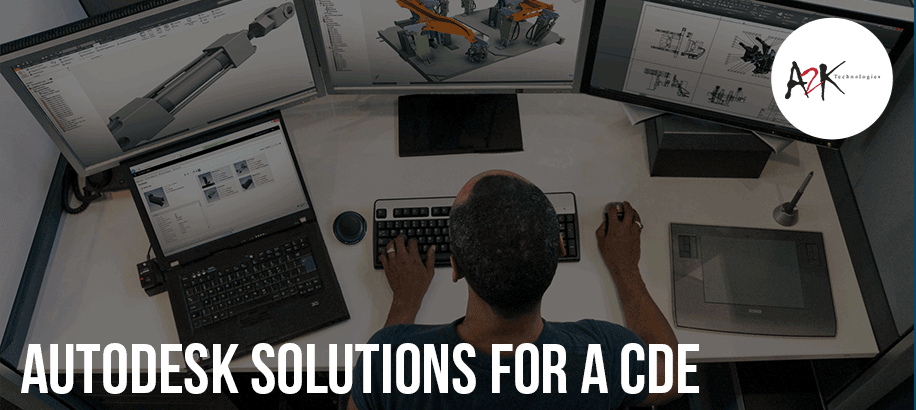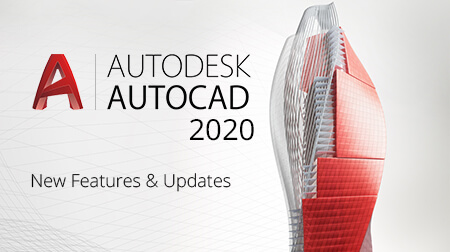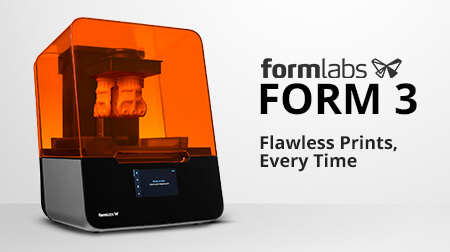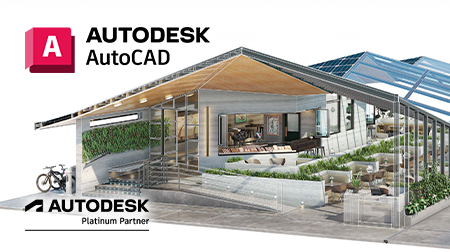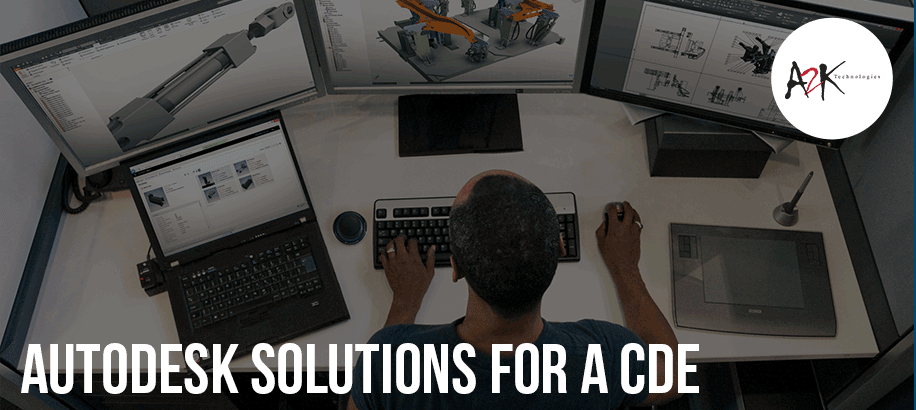
Autodesk Solutions for a CDE
For the purpose of this blog we will cover the implementation of a CDE for the Preliminary and Detailed design phases of a project.
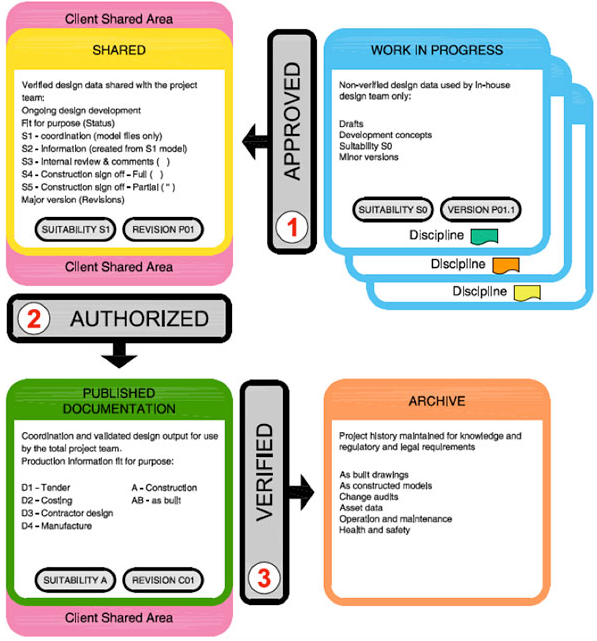
Client requirements
- On-premise Solution
- High Availability
- Out of the box configuration – no customisation
- Capability to support 2D workflow (AutoCAD, Microstation, PDF, Office)
- Capability to support 3D workflows (Revit, Navisworks, Microstation)
- Capability to support Revit worksets and collaboration between different disciplines and teams (Revit Server)
The solution included the following
Autodesk Vault Professional – CDE for all stages of PAS1192 workflow (WIP, SHARED, PUBLISHED, ARCHIVED)
IMAGINiT Clarity Host/Security Module – WIP
CAD Tools used
Revit, Navisworks, AutoCAD, Design Review, Bentley Microstation
Approach used
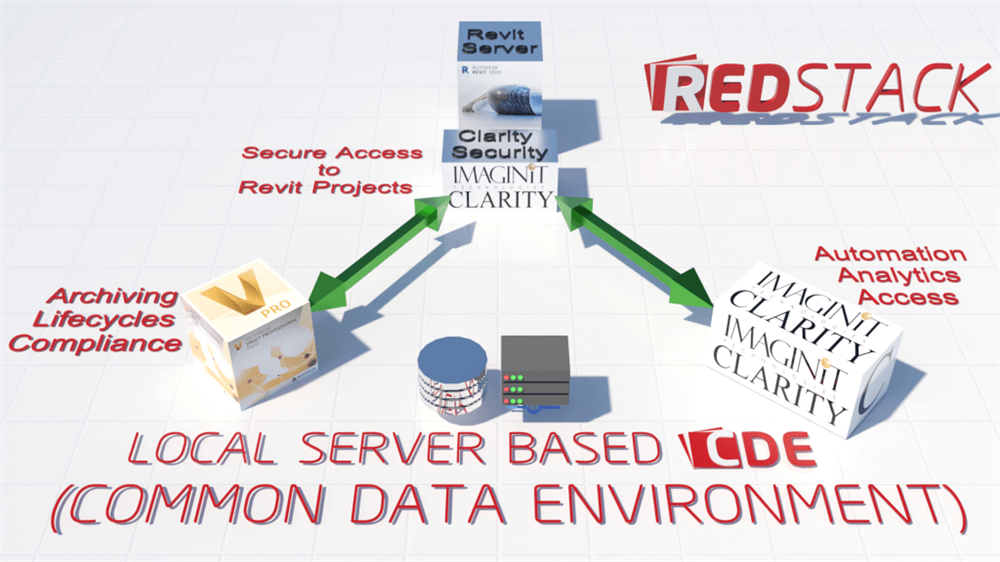
Using IMAGINiT Clarity as the WIP area of the CDE, WIP models for each discipline are stored, managed and accessed by different disciplines. This was achived using Revit Server + Clarity Security as the mechanism for storing/accessing the central model.
IMAGINiT Clarity security model was used to provide the required granular permissions/access at the project and the discipline level.
In addition to controlling access, IMAGINiT Clarity tasks were used to create the required project deliverables needed by each team. Deliverables such as:
- Revit Snapshots at different milestones (RVT) – 3D
- Navisworks Cache Files at different milestones (NWC) – 3D
- 2D PDF sheets
are created automatically or/and on demand and loaded into Autodesk Vault to be shared by team members.
IMAGINiT Clarity tasks were also used to:
- Automate Revit model backups, facilitating the restore process if required
- Capture and review model metrics to control and improve standards
Using Autodesk Vault all project related documentation was managed through the different stages (ie. SHARED, PUBLISHED and ARCHIVED). The information managed included:
- Single source of truth for all the project information
- Separate Vaults that are project specific
- Using Vault folder permissions to control access between different contracts for one project
- Navisworks cache (NWC) files linked to NWF for model federation, clash detection and as a method to add, review and share comments between different disciplines
- Markups of 2D PDF’s for reviews
- Store and manage office related documentation
- Store and manage AutoCAD and Microstation drawings and models
- Use lifecycle states to move data thru different stages SHARED, PUBLISHED and ARCHIVED
- Single source of truth for storing, managing and accessing Revit libraries with full version/revision control
The temptation may exist to use Vault as a windows explorer where SHARED, PUBLISHED and ARCHIVED are folders and data is moved between these locations.
This is not best practice for Vault and should be avoided as it creates duplicates and confusion among project teams.
Version history should be used instead along with revision control at chosen milestones (ie. Suitability levels) to provide project teams with clear and concise information about what is the latest version of the document vs previous revisions/versions
The CDE environment described above is aimed at delivering an On-Premise solution.
For clients considering a cloud alternative, Autodesk BIM360 Docs, BIM360 Design and BIM360 Built should be considered. This solution provides document management tools aimed at managing Revit, AutoCAD, and Office documents along with very specific tool set for WIP/SHARED stages which covers both Low and High Trust scenarios.
With such tools such as version control, folder security, compare, automatic sheet extraction, drawing and field issue tracking, transmittals and review and approval workflows to name a few, it can provide a comprehensive CDE solution worth considering.
A hybrid approach can also be considered using IMAGINiT Clarity where project data can be stored and managed in BIM360 or IMAGINiT Clarity while leveraging the IMAGINiT Clarity task automation tools for record and report project metrics, and create and share deliverables with different team members.

